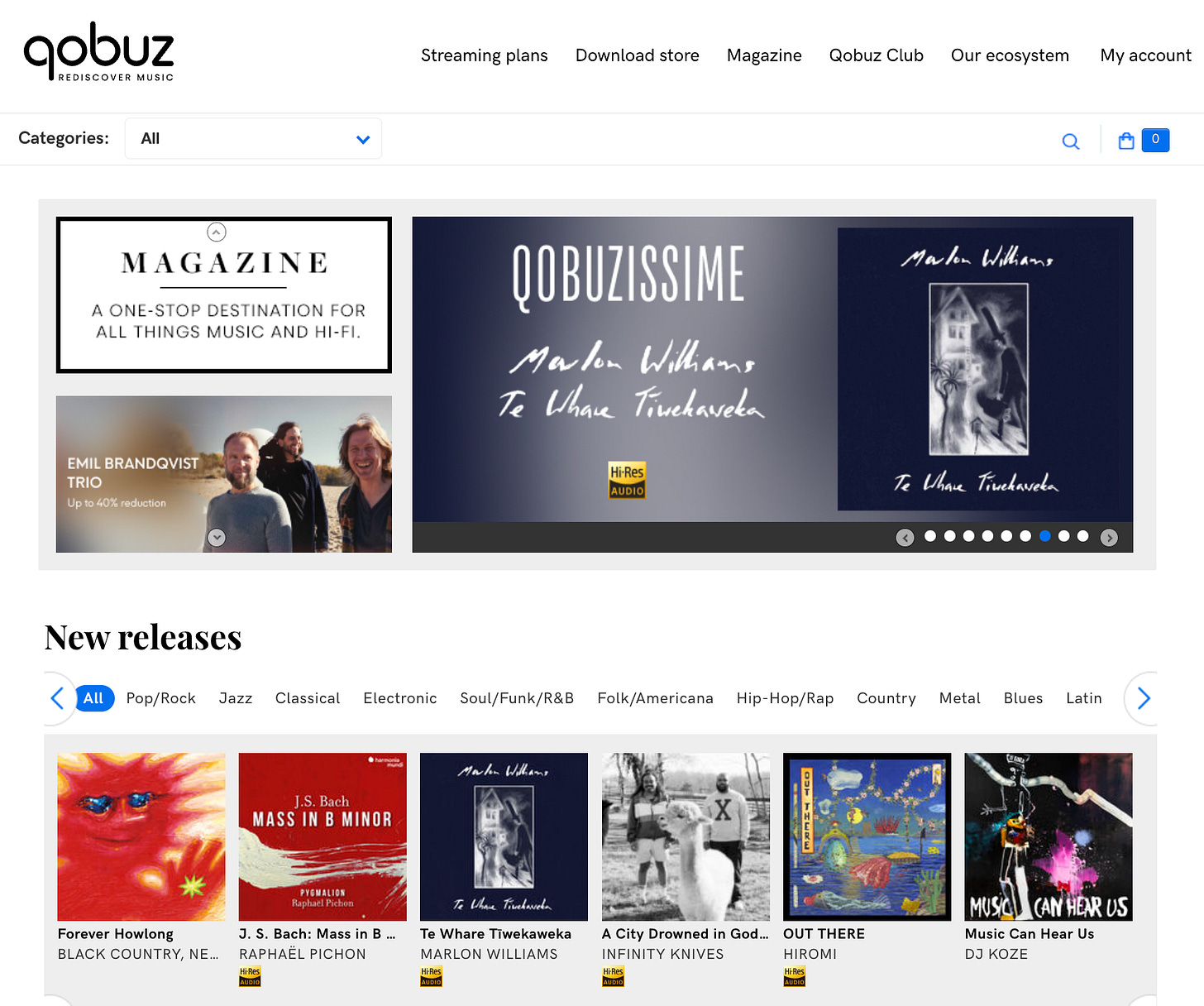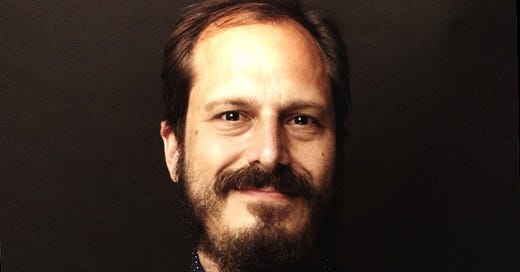The Audiophile's Streaming Service: A Conversation with Qobuz's Dan Mackta
Where should old school listeners stream music? The answer might be Qobuz.
As someone who works in music streaming, I like to believe that I have tried every music streaming service out there. Pandora. Tidal. Spotify. SoundCloud. Demus. Deezer. IDAGIO. I’ve tried them all. Well, at least almost all of them. I’d somehow never tried Qobuz. And I’m sad it took preparing to interview Qobuz’s managing director Dan Mackta to give it a try. It’s high-fidelity streaming offering is unmatched.
Over an hour, Mackta and I talked about why Qobuz spends so much time investing in human curation, how to improve payouts to artists, why they chose to publish their per streaming rate, and (most importantly) how to pronounce their strangely-named service.
I know this is discussed elsewhere, but I think the most important place to start is how to pronounce your streaming service and what it means.
The official line is we don’t care how you pronounce it as long as you subscribe. We say it like “co-buzz,” though. The company originated in France, and the name was taken from an Asian instrument used in shamanic rituals to dispel evil spirits. It is a super weird name.
How long have you worked there?
I started in 2018 before we launched in the US. It was my job to put the team together for the February 2019 launch.
So, the impetus of this conversation was that Qobuz was the first streaming service to confirm their per stream payout rate. In a Billboard article it was reported as $18.72 per 1,000 streams. Why did Qobuz feel the need to publish this rate?
People share rate charts on social media all the time. None of them are official. It’s usually just someone at a small label calculating the rate based on the data that they see. Of course, royalties are not paid out on a per stream basis, but when people generate these unofficial charts Qobuz is often near the top. The marketing folks at the company kept asking us if we could publish an official rate since it would reflect well on us. I was hesitant, but our biggest impediment is lack of brand awareness. So, we went ahead and published it with a million caveats. I think it’s good to have a real number out there.
I’m always fascinated how people latch onto per stream rates given that, as you noted, that rate doesn’t have any direct bearing on how artists are paid.
There are a lot of unintended consequences from how the economics of streaming are setup, like how less listening can lead to higher per stream rates.
To clarify, I assume Qobuz uses the same pro rata scheme that most other streaming services use?
Yup.
So, what do you think differentiates Qobuz from other streamers?
Audio quality is the big one. We were the first service to introduce high fidelity steaming. At the time, the industry was like, “Nobody cares about that. People have been listening to MP3s for years.” Now, most streaming services offer it.
In general, we think of Qobuz as a high-end music boutique. We don’t have podcasts and audiobooks. It’s just music. And there’s a ton of editorial curation for that music, with a particular focus on albums, interviews, and reviews. It’s not a service designed to turn on and be left running in the background. Our users are very active. They are also a bit older. I think 35-and-up is our sweet spot. We also have a download store, so people can still own their favorite recordings in lossless quality. That’s still a big part of our business. We’re just music, all music, all the time. I wish that was our slogan.

I know that many other streaming apps have some editorial content, but it seems to be the lifeblood of Qobuz. I mean it is literally one of the dedicated tabs of the app, along with Discover, Library, and Search. Was that part of the company’s DNA from the beginning?
Keep reading with a 7-day free trial
Subscribe to Can't Get Much Higher to keep reading this post and get 7 days of free access to the full post archives.





